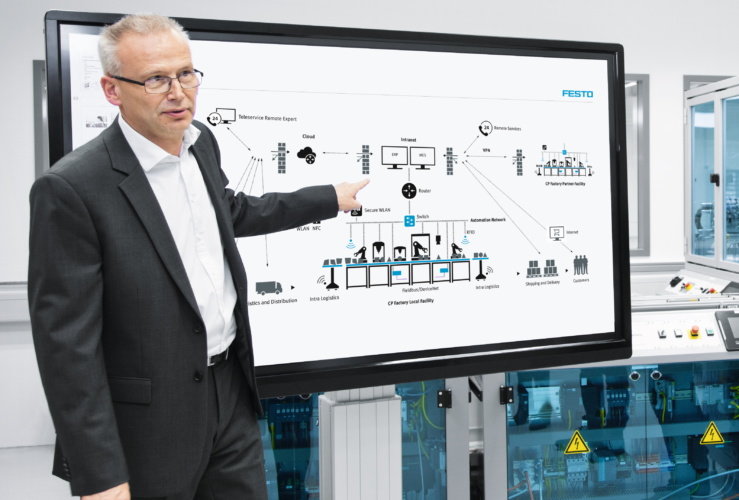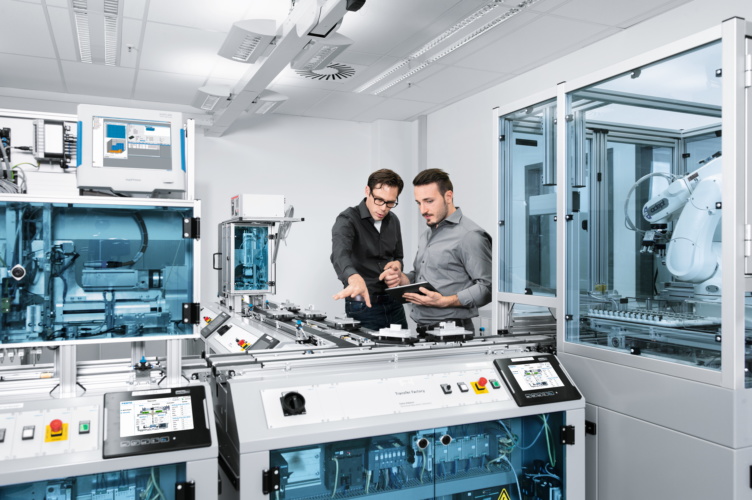The name "Asset Administration Shell" (AAS) may not be familiar, but its importance in the implementation of Industry 4.0 cannot be underestimated. Hidden behind this technical term are genuinely exciting engineering changes.
The AAS is the 'digital shell' that wraps around each smart element of a machine, enabling it to explain its function, identity and other important information to the complete machine architecture. It is a crucial enabler in speeding up the design of complex machines and enhancing their whole life operating effectiveness.

Essentially, the AAS enables assets to be integrated into the world of information. These assets can be machines and their components, supply materials, documents or any other data that will help machines and humans to collaborate effectively using common standards, protocols and languages. While the cloud, networking and automation devices with internet access can deliver connectivity, the AAS is truly universal, openning up exciting possibilities. It enables information to be exchanged between value chain partners, and uses neutral, semantic standards for communication andservices across companies and across sectors.
AAS in action
To better understand the role of the AAS, let’s use a worked example. A design engineer is looking for an electro-mechanical axis that can move a part of their machine with a defined mass, at the required velocity and acceleration. Selecting the component using an online configurator, the engineer needs to match the axis to a motor and gearbox combination to deliver the required torque and performance characteristics. Next, the matching servo drive is selected. At each stage, the digital description of the system is built up: for example, describing the parts' properties and capabilities. So, as each selected part is configured in the virtual world, its digital descriptor is created in parallel, providing its Identification (what it is), Technical data (how it works) and Documentation.
As the design process progresses from a single asset to a sub-system, the digital descriptor grows and integrates the sum of all the parts. The resulting virtual model is accessed throughout the machine lifecycle, from machine inception through to build, operation, maintenance and even re-purposing. It upscales in a modular way as the solution grows. The AAS includes a further digital model that captures the Operation data. Under each of these headline modules are submodels that semantically enable the transfer of data – independent of the supplier or manufacturer. Common standards allow the seamless transfer of machine-readable data. In other words, the AAS is the means by which Digital Twins become possible.

The AAS is also an excellent boost to AI (machine learning) efficacy. An Edge or Cloud-based processor running a combination of algorithms is tuned to the application (such as the Festo AX package), monitoring vast data tranches. The system observes and identifies patterns and anomalies within the data lake. During the set-up period, a human-in-the-loop trains the system by categorising the anomalies it detects. The human operator teaches the system; rewarding and labelling predictions of failures and 'punishing' unhelpful observations. In this way, the system is trained and improves its useful predictions whilst tuning out unhelpful noise.
Next steps
The Industrie 4.0 workgroup developing the Asset Administration Shell has done a fantastic job within a short space of time. The big question is: can an engineer with this extra information improve or accelerate their work? Potentially there is a balance to be had between the enormous benefits to be gained through using smarter products coupled to immense processing power and investing in more complex and expensive systems at the outset. End-users rightfully need to see the evidence of improved lifetime efficiency and payback before specifying these technologies to their line and machine builders.
Quick wins, though, are already at hand. For example, Festo offers a free software tool called Quick Search plus, a powerful extension to our digital catalogue. All product data within the Bill of Materials is captured and seamlessly transferable. A designer can select a part from the BoM, such as a pneumatic cylinder, and immediately use it within the Festo 3D CAD design tool. The correctly matched accessories are added to the drawing in seconds. The complete assembly can be offered up in the machine general assembly drawing and simply dropped into place.
To conclude, the digitalisation process encompassed by the AAS is evolving extremely quickly. The vision and the benefits are so compelling that many potentially rival organisations have worked together to create a working, albeit still developing, solution. Festo is using its experience in the field of mechanical engineering and automation to support the development of the AAS. Increasingly we are developing smart digital solutions combining extensive know-how and experience with the latest information technology developments.
Learn more about AAS in Festo’s free webinar Industry 4.0 What is really new? The Asset Administration Shell. To watch the recording visit: www.festo.co.uk/webinars




IEA report claims batteries are ‘changing the game’
Oh I don't know. The typical waiting time outside of A&E for admitting patients would give them plenty of time to recharge … ?